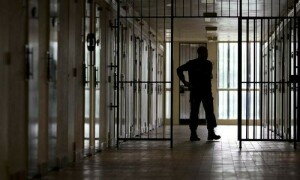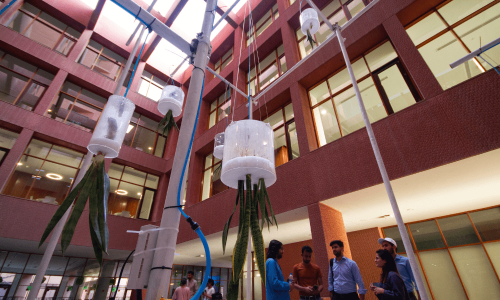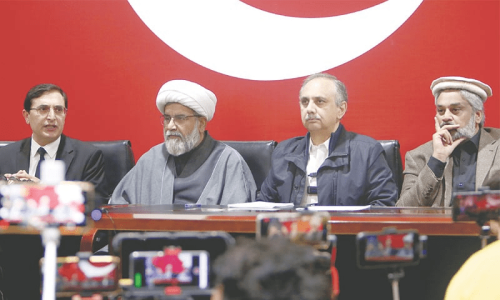ON Friday morning, the interbank market for foreign currency had a rude awakening as the rupee plunged against the dollar, and, just like last July, no attempts were made by the State Bank to shore up its value. Rumours filled the air as the rupee fell beyond 109 to a dollar, before stabilising at 107 by the close of trade.
“This movement in the exchange rate is based on demand and supply of foreign exchange in the interbank market,” the central bank said in a press release issued only a couple of hours later, adding, “[t]he exchange rate will continue to reflect the demand and supply conditions”.
Also read: In talks with IMF, Pakistan agrees to depreciate rupee
It appears that the old days of central bank intervention to maintain an overvalued exchange rate are over.
On Monday, we will see to what extent the State Bank’s resolve will hold, and how far the rupee has to go before it finds its true value “based on demand and supply of foreign exchange in the interbank market”.
Whatever happens in the days to come, we can only hope that there is a firm hand on the tiller as the economy enters choppy waters. But these hopes are hanging on a weak peg, because the State Bank’s acknowledgement of the exchange rate implications of the widening current account deficit now appears to be coming out of thin air. After all, only a fortnight ago in its November monetary policy statement (which now reads like a joke, incidentally), the State Bank was assuring us that all is well, that exports and remittances are ticking upwards, that the regulatory duties will sort out those pesky non-essential imports. And a mere 10 working days later the same State Bank is telling us that “the continuation of high growth in imports led to a widening of current account deficit, and consequently to depletion in the country’s foreign exchange reserves”, and, of course, an abrupt depreciation in the exchange rate.
Did the current account deficit widen in these 10 days alone? Did those who took exactly the same step back on July 5, only to be shouted down, have a point after all?
The decision to let the rupee find its own value was necessary. The dogged refusal of the former finance minister to even entertain the possibility was causing grave damage to the economy. But it is a little difficult to believe that the decision has been taken autonomously at the State Bank, and that the talks under way with the IMF for post-programme monitoring had nothing to do with it.
This is why it is so important for the State Bank to be led by a strong and independent governor, who is not afraid to use his voice to prevent embarrassments of this sort, where the central bank has to be led like a toddler to the dining table to eat his own words.
Published in Dawn, December 10th, 2017












































